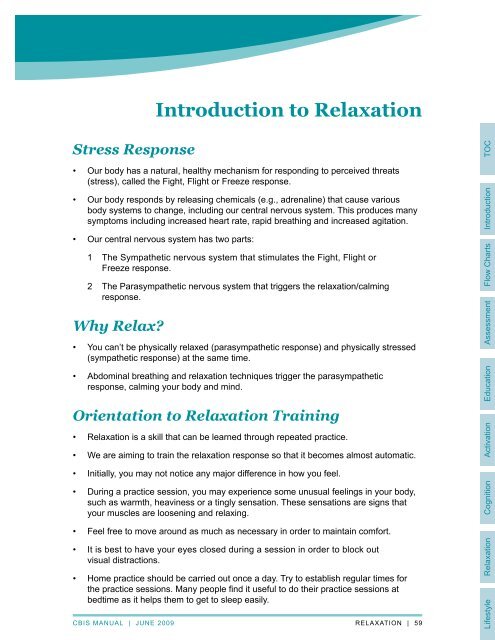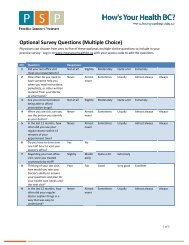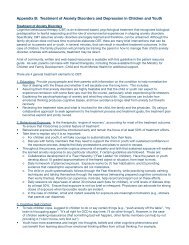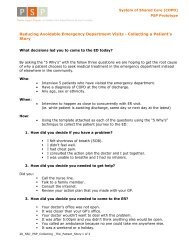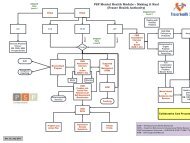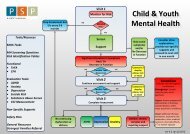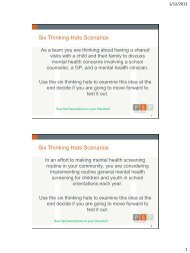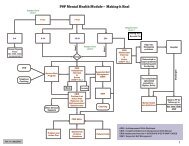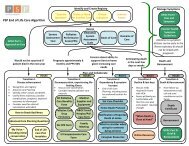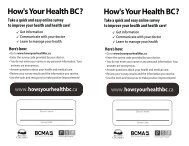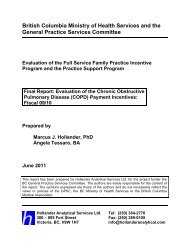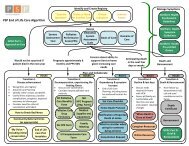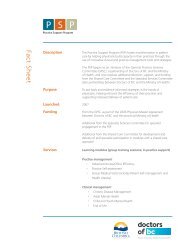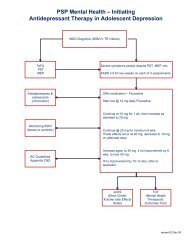cognitive behavioural interpersonal skills manual - GPSC
cognitive behavioural interpersonal skills manual - GPSC
cognitive behavioural interpersonal skills manual - GPSC
- No tags were found...
You also want an ePaper? Increase the reach of your titles
YUMPU automatically turns print PDFs into web optimized ePapers that Google loves.
Stress ResponseIntroduction to Relaxation• Our body has a natural, healthy mechanism for responding to perceived threats(stress), called the Fight, Flight or Freeze response.• Our body responds by releasing chemicals (e.g., adrenaline) that cause variousbody systems to change, including our central nervous system. This produces manysymptoms including increased heart rate, rapid breathing and increased agitation.• Our central nervous system has two parts:1 The Sympathetic nervous system that stimulates the Fight, Flight orFreeze response.2 The Parasympathetic nervous system that triggers the relaxation/calmingresponse.Why Relax?• You can’t be physically relaxed (parasympathetic response) and physically stressed(sympathetic response) at the same time.• Abdominal breathing and relaxation techniques trigger the parasympatheticresponse, calming your body and mind.Orientation to Relaxation Training• Relaxation is a skill that can be learned through repeated practice.• We are aiming to train the relaxation response so that it becomes almost automatic.• Initially, you may not notice any major difference in how you feel.• During a practice session, you may experience some unusual feelings in your body,such as warmth, heaviness or a tingly sensation. These sensations are signs thatyour muscles are loosening and relaxing.• Feel free to move around as much as necessary in order to maintain comfort.• it is best to have your eyes closed during a session in order to block outvisual distractions.• Home practice should be carried out once a day. Try to establish regular times forthe practice sessions. Many people find it useful to do their practice sessions atbedtime as it helps them to get to sleep easily.CBIS Manual | JunE 2009relaxATion | 59


